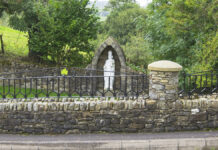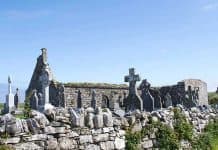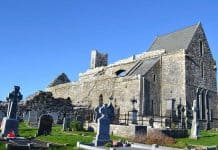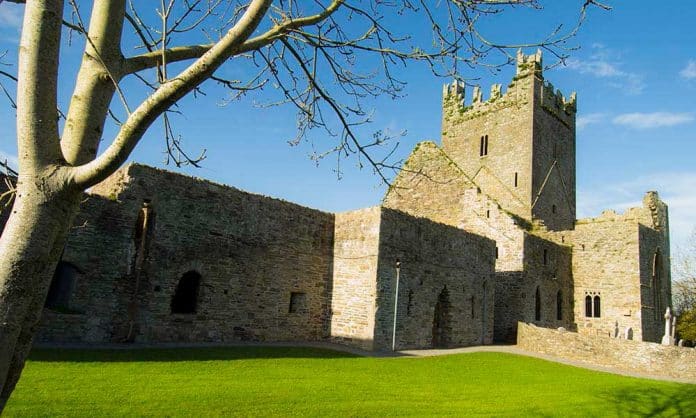
Jerpoint Abbey is located just over two and half kilometres west of Thomastown in County Kilkenny, and is an important national monument, which has been cared for by the Office of Public Works since 1880. The abbey, originally built in the latter half of the twelfth century, was once home to a large community of Cistercian monks and thrived until it was destroyed as part of Henry VIII’s Dissolution of the Monasteries in the 1530s. The ruins are now one of the most visited holy sites in Ireland.
Founding of the Abbey
Jerpoint Abbey was probably built between 1160 and 1170, having been commissioned by the King of Osraige, Domnall Mac Gilla Pátraic. It was built for the Cistercian monks who had previously resided in Baltinglass Abbey, and was constructed on the site of an earlier Benedictine monastery before being dedicated to the Blessed Virgin.
Famed for the exquisite statues and carvings which embellished the abbey, the ruins are among the finest in the region.
Design and Layout
The oldest parts of the abbey are the Romanesque chancel and transepts, while the magnificent east window dates from the 14th century and the tower and reconstructed cloister from the 15th. To the north side of the nave, there is an arcade featuring six arches and statues, each with a unique design.
The architecture is unusually ornate for a Cistercian place of worship, featuring some incredibly intricate and detailed stonework and statues. Tomb sculptures arranged throughout the transept chapels vary in age from between the 13th and 16th centuries, many featuring incredibly delicate and unusual designs and sculptures.
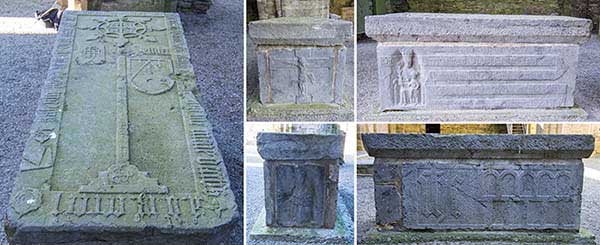
The abbey was designed to be entirely self-sufficient, with its own kitchens, gardens, watermill, granary and cemetery. As many of these features are still clearly visible and remarkably well-preserved, they offer a wonderful insight into historical life within the abbey.
The Cistercian Community
The Cistercians are also known as Trappist or White Monks, and are among the strictest of Catholic religious orders. The original Cistercian community is thought to have moved to the abbey in 1180, after Jerpoint was made a daughter-house of Baltinglass Abbey in County Wicklow.
Life for the Cistercians was austere, with the monks rising at 2am every day and engaging in a strict regime of prayer, meditation and the manual labour which kept their community self-sufficient. Their beliefs did not permit them to eat meat, but the monastery’s gardens, granary, watermill and kitchens would have kept them supplied with various sources of food throughout the year.
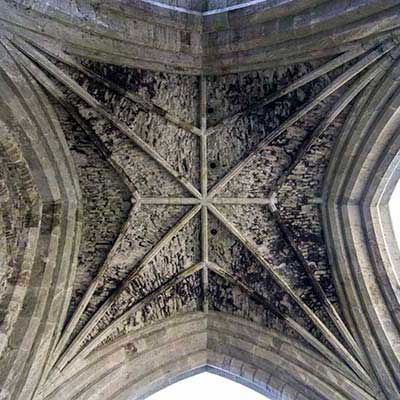
The Cistercians in general thrived throughout the Medieval period, becoming highly influential and wealthy. Monastic life at Jerpoint ended abruptly in 1541, with Henry VIII’s Dissolution of the Monasteries, when the last abbot, Oliver Grace, was forced to surrender the building and all its contents. Following the building’s destruction, its 1,880 acres of land were handed over to James Butler, 9th Earl of Ormond.
Tombs, Carvings and Statuary
The abbey is well-known for its incredible array of statuary and stone carvings. The 12th century church displays some exquisite Romanesque architecture, while later additions and extensions to the building perfectly showcase the ornate Medieval style, with its sculpted arches and religious iconography.
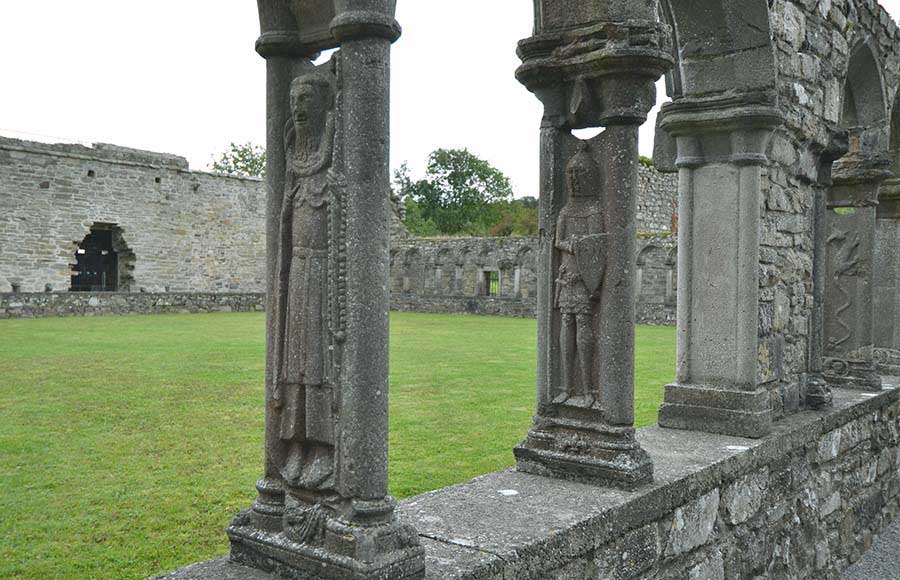
The 15th century sculptured cloister arcade is the main draw for many visitors, and as well as the intricately carved columns, depictions of knights, clerics and grotesques adorn the ancient stonework. Among the most unusual sculptures are ‘the weepers’, six religious reliefs now identified as some of the Apostles.


Many of the tombs located in the various transept chapels feature unique designs and commemorative sculptures. The most well-known of the tombs is probably that of Bishop Felix O’Dullany, who was interred in the main tower after his death in 1202. The face of the effigy is now badly worn, as it was believed that pilgrims touching the bishop’s face would be cured of their illnesses.
Dissolution
Following his break from Rome, Henry VIII’s campaign to wrestle back wealth and land from the Church led to widespread destruction throughout Ireland and the United Kingdom. Between 1536 and 1541, the King’s armies went between sacred sites, destroying statuary, seizing money and possessions and punishing the inhabitants as they went.
As Lord of Ireland, Henry made deals with various clan chiefs and members of the aristocracy, which saw them seize religious sites and claim the land on which they were built. Jerpoint suffered just such a fate. After it was surrendered by the last abbot, Oliver Grace, the lands were ceded to the Earl of Ormond and the abbey became little more than a place of interment.
The Abbey Today
Today, Jerpoint Abbey is considered an important sacred site and its ruins and statues attract visitors from all over the world. Despite some neglect and deterioration over the centuries, elements of the abbey are surprisingly well-preserved and provide a fascinating glimpse into the lives of the Cistercian monks who called it home for such a long period of time.
The Jerpoint Abbey ruins contain some of the most unusual Cistercian architecture and statues to be found anywhere in Ireland, and those visiting the area would be well-advised to take in this sacred site and learn more about the Cistercian monks, the building’s rich history and about recent efforts to preserve what remains of this truly impressive monument.
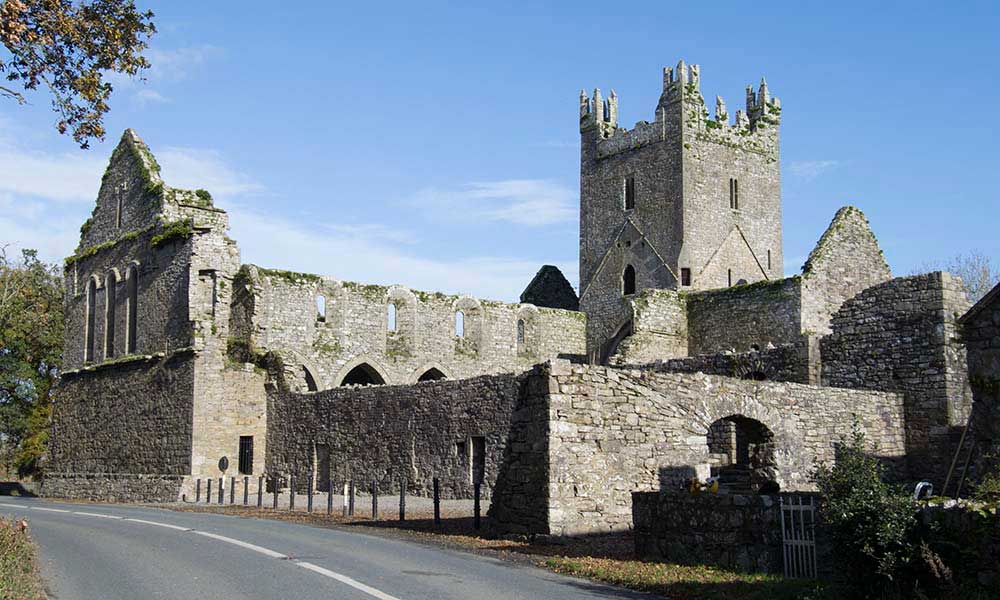
Visiting Jerpoint Abbey
A visit to this 12th century Cistercian Abbey is highly recommended. Jerpoint Abbey is signposted from Thomastown. Take the R448 (N9) south-west from Thomastown for approximately 2.5 kilometres. The Abbey is located on your left. It is open to visitors all year round, but with reduced hours during Winter months, so it is recommended that you check before you visit.
Opening Hours
March – September: Daily 09.00 – 17.30,
October: 09.00 – 17.00,
November – Start December: Daily 09.30 – 16.00
Rest of the year open only to pre-booked groups.
Last tour 1 hour before closing.
The Abbey is closed for the Christmas period from 19th December – 5th January inclusive, re-opening on Wednesday 6th January.
There is a carpark and visitor centre at the site. The visitor centre has an exhibition area within it, this is in addition to the one within the Abbey buildings themselves. There are toilets in the visitor centre but no cafe or refreshments are available.
Guided tours start regularly. They are limited to a maximum number of 50 to 55 individuals. Their duration is approximately 45 minutes, are free and are highly recommended.
Admission Fees
Heritage Card/English Heritage Card holders: Free
Adult: €5.00
Group/Senior: €4.00
Child/Student: €3.00
Family: €13.00
There is a leaflet about the Abbey available from the visitor centre in English, Irish, German, French, Italian and Spanish.

